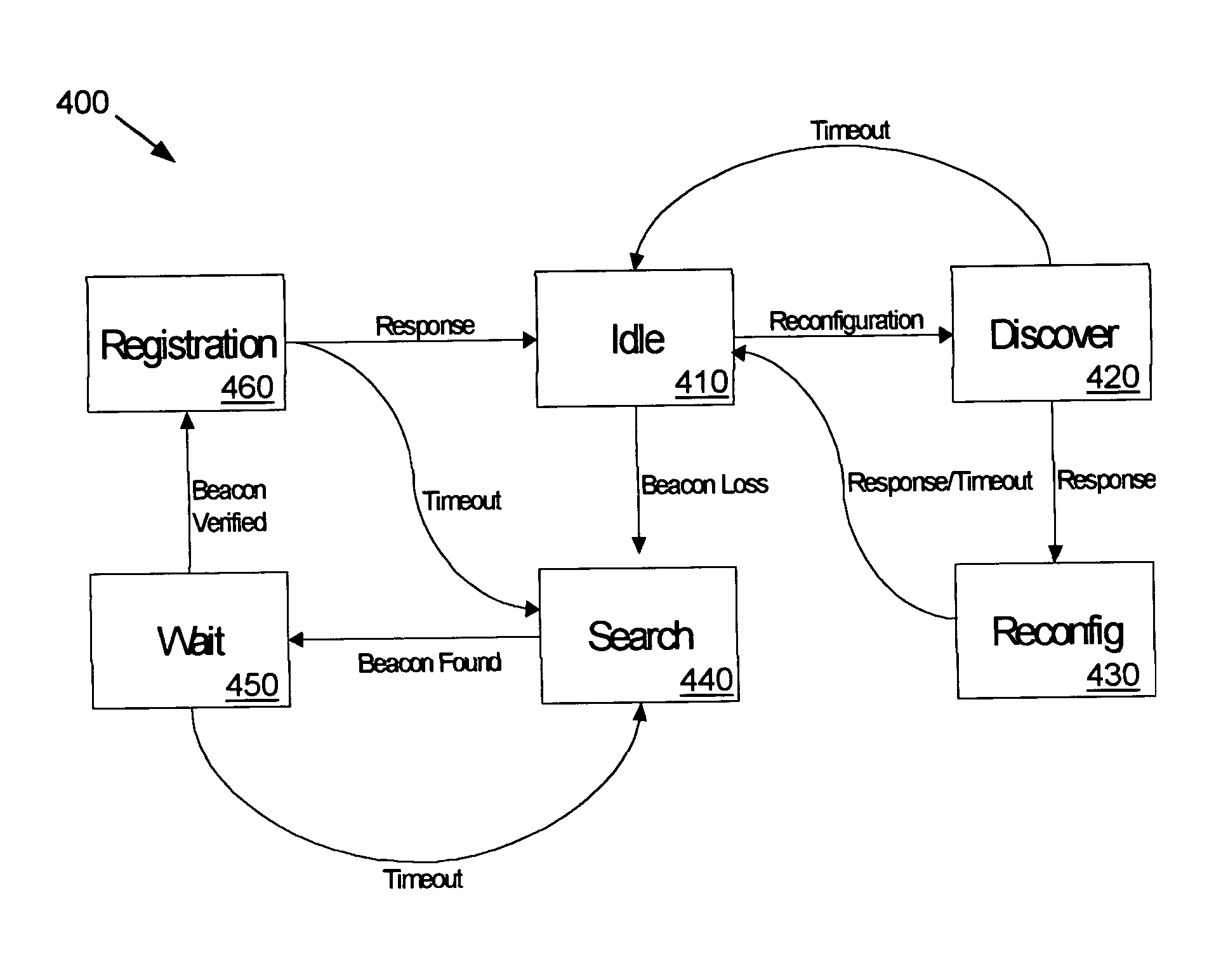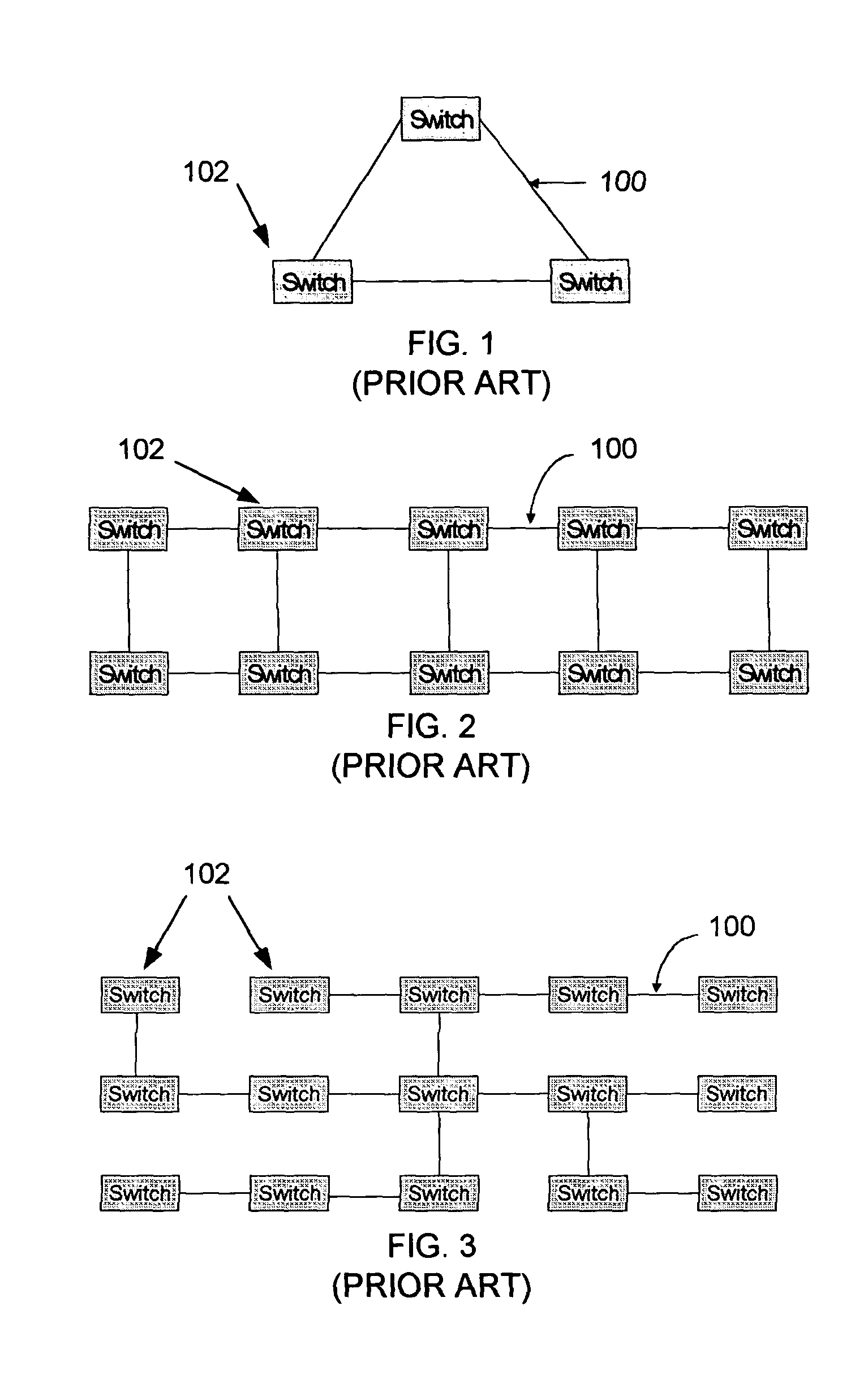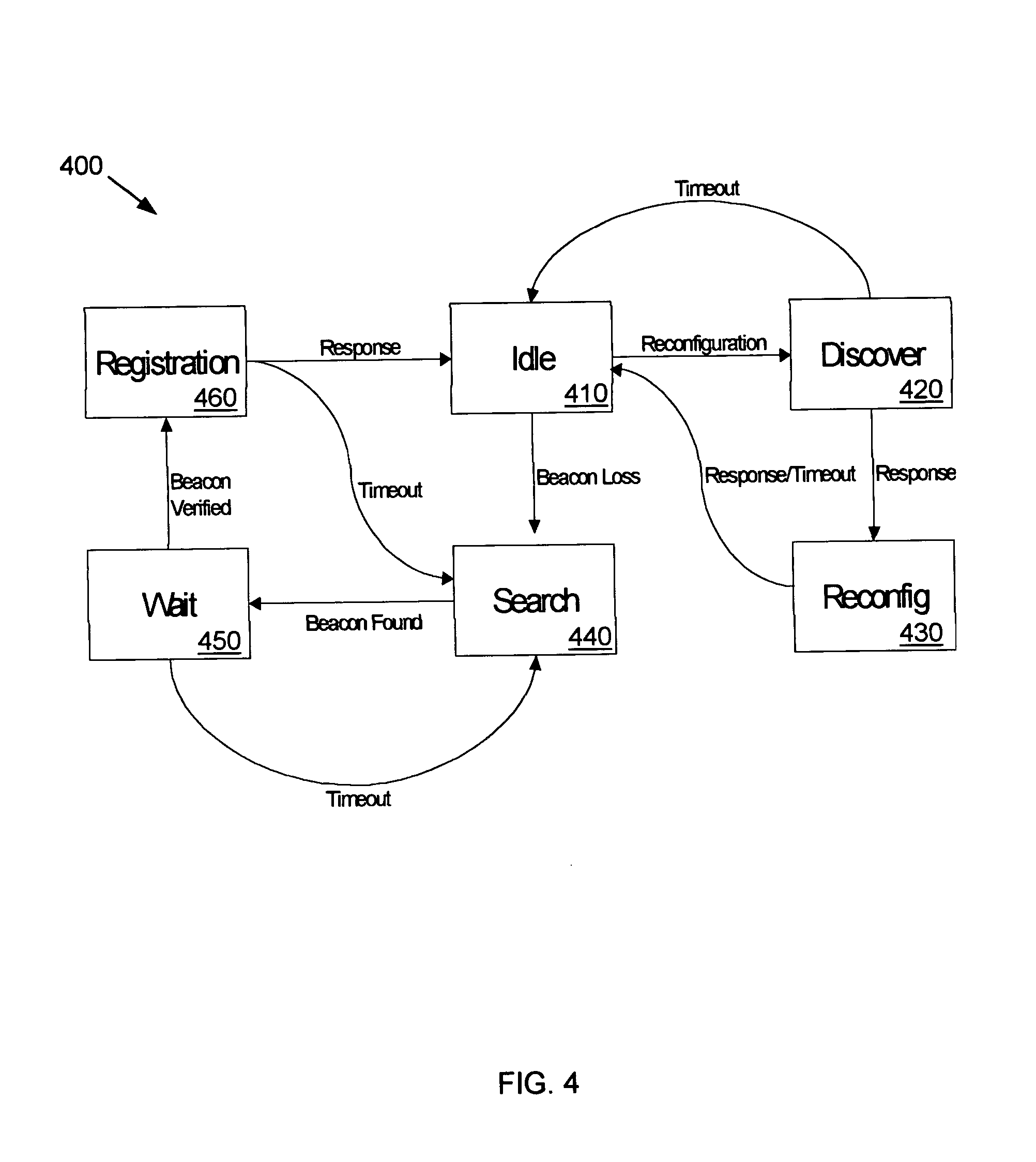Self-healing tree network
a tree network and self-healing technology, applied in the field of data communication, can solve the problems of slow network recovery process, adverse effects on network bandwidth, and inability to recover from tree network, so as to avoid the creation of network loops
- Summary
- Abstract
- Description
- Claims
- Application Information
AI Technical Summary
Benefits of technology
Problems solved by technology
Method used
Image
Examples
Embodiment Construction
[0024] In self-healing communications networks described herein with respect to FIGS. 4-6, a number of nodes are physically deployed in a mesh configuration and may be logically connected in a tree structure. The node may provide sophisticated switch functions, such as switching decision based on the IP address or TCP port of the received packet. Such interconnected nodes can then simultaneously behave as Layer 2 (Ethernet) switches and Layer 3 (IP) switches, wherein Layer-2 switching may be provided for applications that do not need the flexibility or the additional complexities of Layer 3 switching and the Layer-3 capabilities allows for additional network flexibility. Such additional switching functionality is advantageous for provisioning advanced services, but is not required to perform the processes of the present disclosure.
[0025] The decision as to where a received packet is sent (i.e., a switching decision) is determined by each network node based on the MAC address of a r...
PUM
 Login to View More
Login to View More Abstract
Description
Claims
Application Information
 Login to View More
Login to View More - R&D
- Intellectual Property
- Life Sciences
- Materials
- Tech Scout
- Unparalleled Data Quality
- Higher Quality Content
- 60% Fewer Hallucinations
Browse by: Latest US Patents, China's latest patents, Technical Efficacy Thesaurus, Application Domain, Technology Topic, Popular Technical Reports.
© 2025 PatSnap. All rights reserved.Legal|Privacy policy|Modern Slavery Act Transparency Statement|Sitemap|About US| Contact US: help@patsnap.com



